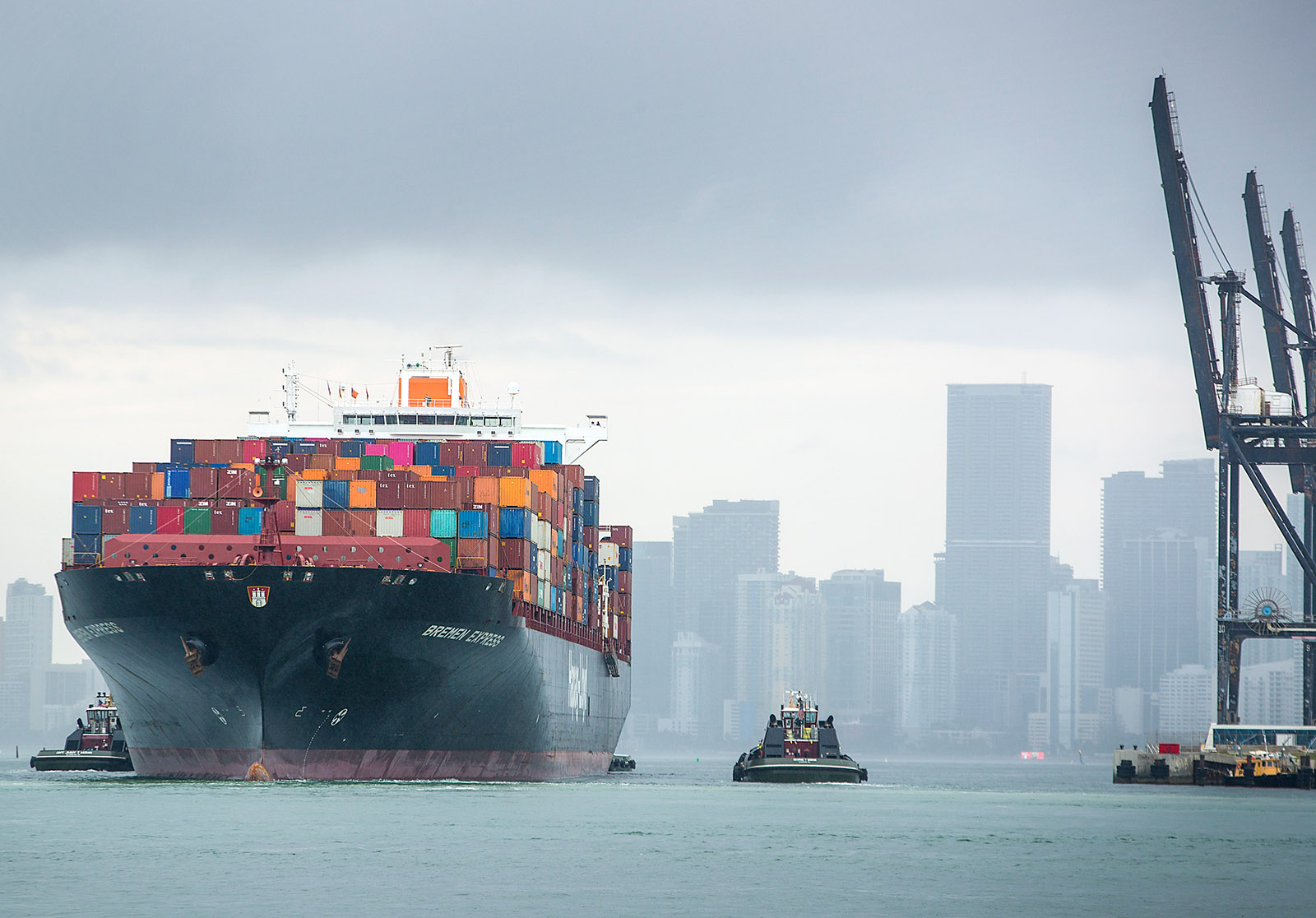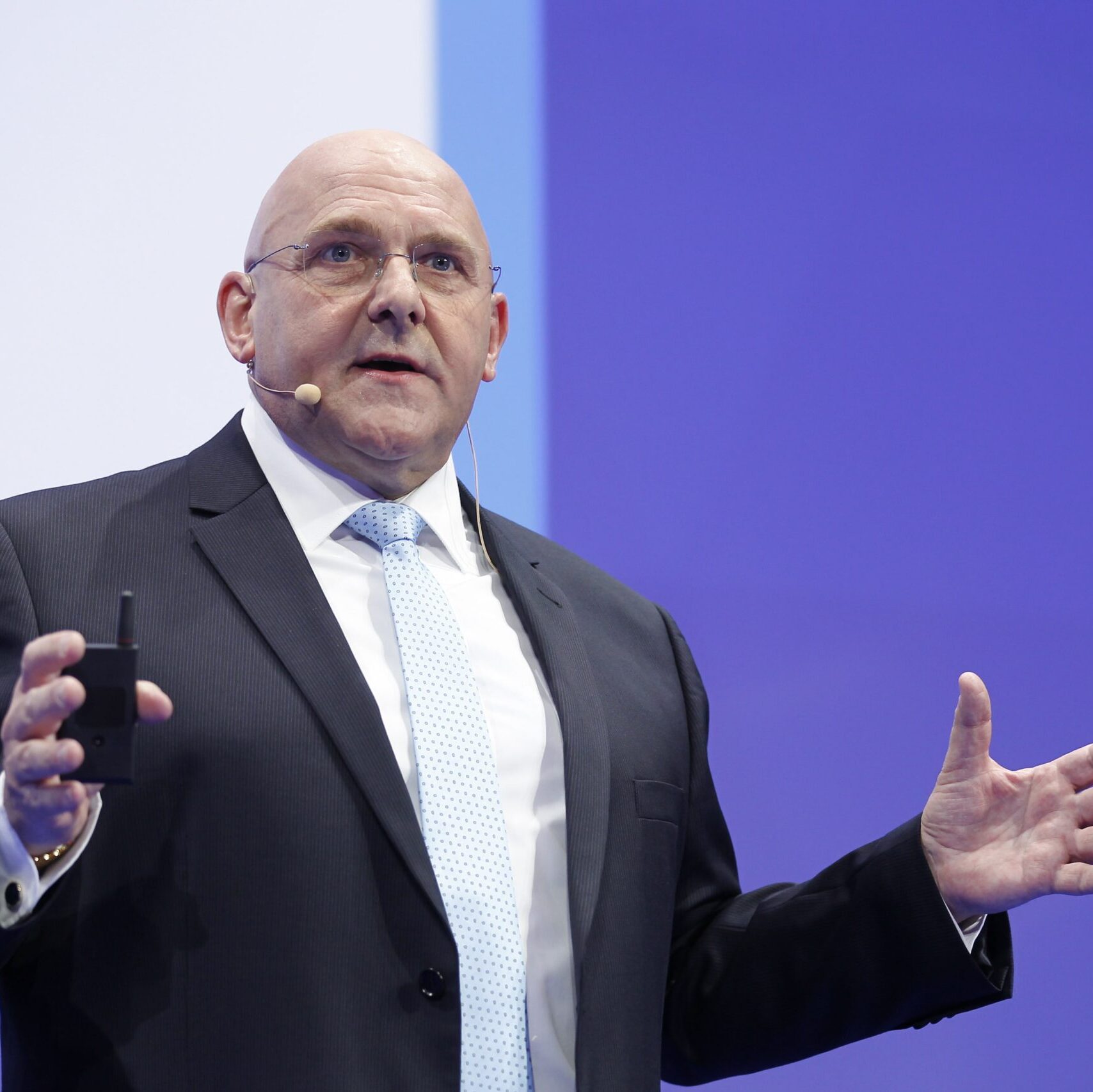
The Bremen Express cargo ship prepares to dock in Miami Beach, Florida. Near-shoring typically leverages lower-cost locations in closer proximity to the final consumption markets.
Photo: Joe Raedle/Getty Images
Buffeted by the forces of protectionism and new technology, businesses are having to reassess how they protect — and adapt — their value chains around the world. BRINK recently spoke to Mark Millar, author of the book Global Supply Chain Ecosystems and asked him for his assessment of the changing landscape.
Mark Millar: During recent years, the escalating cost burden of managing global supply chains has led many companies to reconsider their approach. The latest protectionist tendencies from governments further exacerbate the complications and challenges, increasing the appeal of near-shoring and on-shoring strategies.
Also driving the trend toward a more regional approach is the increasing toll from unintended consequences of global supply chains, such as time, cost, quality and risk.
In the context of slowing GDP growth and a reduction in international trade, powerful world markets have become more fractured. Near-shoring typically leverages lower-cost locations in closer proximity to the final consumption markets — for example, Mexico for North America and countries like Poland and Hungary for Western Europe. North Africa is now also on the agenda as a low-cost production base from which to serve the European markets.
These changes will result in more regional supply chains, whereby goods are produced in and distributed from locations that are closer to the end consumer market, generating substantial business benefits in terms of time, cost and service, while also reducing risk.
This will result in many global supply chains becoming reconfigured regionally as “Made in North America for America,” “Made in Eastern Europe for Europe” or “Made in Asia for Asia.”
However, this will, by no means, result in a mass exodus from manufacturing in Asia.
This is because the well-entrenched, finely tuned and highly efficient global supply chain ecosystems that service the Asia-Europe and Asia-America trades cannot be easily or fully replaced. The other key reason for Western companies to keep production in the Far East is the enormous potential of the massive domestic consumer markets across Asia’s emerging economies: Just think about where the next 200 million – 300 million middle-class consumers are going to be!
BRINK: Sooner or later, there are likely to be added costs for carbon-intensive transportation. How will this impact supply chains?
Mr. Millar: As carriers move to reduce emissions and deploy lower-carbon alternative energy options, yes, there will be an impact on the cost of transport. The resulting increased transportation costs will further encourage the trend toward shorter, more regional supply chains, which reduce the distance the goods need to travel and can, therefore, offset some, if not all, of the additional expense.
Reducing the distance that goods travel reduces emissions and fuel consumption, while improving use of assets; hence, shorter supply chains can drive multiple benefits, both for businesses and communities alike.
BRINK: What about AI technology — is this likely to be as disruptive on supply chains as it is on other areas of business?
Mr. Millar: Yes, if not more. In fact, my view is that the impact of digital disruption will make this period through to year 2030 both the most exciting and the most challenging decade for supply chains that I have experienced or can imagine.
Multiple facets of digital disruption are impacting the whole supply chain, across several dimensions, including production, warehousing, transport and freight forwarding.
AI technology, together with cloud computing, internet of things and big data analytics, will have a profound effect on the supply chain function.
Organizations that successfully deploy these technologies across their supply chains can expect to dramatically improve their supply chain visibility (typically one of the top three challenges for any business), while also improving performance across other critical disciplines, including demand forecasting, inventory management and customer service.
A critical element of supply chain resilience is being prepared — becoming better equipped to sense and respond to the various risks inherent across the ecosystem.
BRINK: There are still areas of the world, such as parts of sub-Saharan Africa that are not tied into global supply chains. Do you see that changing?
Mr. Millar: Yes, dramatically.
In the coming decade and beyond, we can expect to see substantial change for sub-Saharan Africa, both in the role it plays in global supply chain ecosystems and in the local and regional supply chains needed to serve the huge and growing domestic market across the continent.
Sub-Saharan Africa is one of the world’s fastest growing regions. Already home to more than one billion people, the population is forecast to double to 2.2 billion people by the year 2050, when it will represent 23% of the world’s population.
This huge populace offers an abundant labor pool, such that many international companies are already exploring low cost country sourcing initiatives in sub-Saharan Africa, particularly for large-scale, labor-intensive production operations.
The forthcoming implementation of the recently concluded Africa Continental Free Trade Area will establish a single market for goods and services across 54 African countries, creating a continental customs union, which will streamline trade and accelerate international investment.
Such free movement of goods will further empower regional expansion, both as a manufacturing base and strengthen the attractiveness of the internal market at a time of rising consumerism across a massive population with a steadily expanding middle class.
This economic development model is similar to the three decades of unprecedented growth and prosperity we have witnessed across emerging Asia, where the multinational corporations “first came for the workers, but now stay for the shoppers.”
BRINK: How should a company manage its supply chain risk?
Mr. Millar: It is essential for companies to mitigate supply chain risk by developing supply chain resilience, whereby resilience is the ability to recover quickly from change or misfortune and return to their original form.
A critical element of supply chain resilience is being prepared — becoming better equipped to sense and respond to the various risks inherent across the ecosystem — and to build the capabilities to rapidly recover from such challenges.
In reality, how many risks can we actually predict or prevent? Better then to concentrate limited resources on developing plans and contingencies that make companies better prepared to respond to a whole range of eventualities.
Building supply chain resilience involves three key processes:
- Mapping the supply chain
- Modeling what-if scenarios
- Plotting likelihood versus impact
Every business will have — or should have — its own unique risk strategy to detect and assess potential weaknesses in its supply chain. Having mapped out the whole supply chain ecosystem, including all participants and the interdependencies, modeling what-if scenarios helps to identify and evaluate vulnerabilities.
Plotting the likely probability of major threats versus the potential impact helps supply chain executives to determine priorities and allocate resources for mitigation strategies. If you’re counting on it, it’s a risk; expect the unexpected, and be prepared!
BRINK: Do you recommend some kind of board representation?
Mr. Millar: The supply chain incorporates every activity involved in the effective sourcing of products and the efficient delivery of those products to customers. Having become such an essential aspect across all spheres of management, supply chains most definitely should have a place at the table and be a standing item on the agenda.
I have long advocated a more prominent role for the supply chain function, so I am encouraged by the trend toward appointing chief supply chain officer positions on the boards of large organizations.
The supply chain function and the marketing function are becoming the primary engines that drive the business. They are distinctly influential in empowering business growth, increasing market share, driving revenue and generating profits. The chief supply chain officer and chief marketing officer will become the most critical leadership roles to sit alongside the CEO and CFO in an enlightened C-suite of the future.






